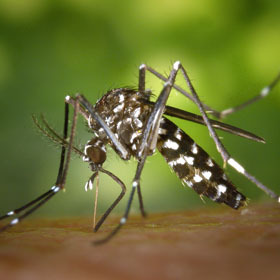

What do the coronavirus, plague, Ebola and many other infectious diseases have in common? In this task, the students analyse an interview with a scientist about zoonotic diseases. They find out that the coronavirus originated in animals. They develop their own ideas on how the risk of zoonotic diseases can be reduced. This lesson plan is suitable for classroom teaching and online learning at home.
Students will:
Main questions for this lesson:
To start, the teacher introduces the main questions for the lesson. The students then hold a full-group discussion on the following questions (in class or by video conference):
In this way, the students collate and reflect on their existing knowledge and their assumptions about the topic. The findings are noted on the blackboard/smartboard/in workbooks (with no comments from the teacher initially).
The teacher briefly informs the class that COVID-19 is a zoonotic disease: scientists have ascertained that the virus causing it originated in an animal.
In addition, the teacher describes other examples of zoonotic diseases, such as HIV, rabies, plague, Ebola and SARS. In a brief class survey, the students discuss whether they have heard of these infectious diseases. The teacher explains that experts are predicting the possible emergence of more zoonotic diseases in future. The teacher also gives an example of diseases that can be transmitted from humans to animals: flu viruses can be passed onto mountain gorillas and other great apes if infected humans get too close to these animals.
The students work independently on the background to the emergence of various zoonotic diseases. With the aid of information materials, they answer the main questions:
To answer the questions, the students analyse an interview with Professor Josef Settele, a scientist at the Helmholtz Centre for Environmental Research in Germany. If necessary, the students can listen to the interview several times.
Based on the content of the interview, the students produce a definition of the term "zoonotic diseases".
This definition should include answers to the following questions:
The students present their findings to the group (in class or by video conference). The questions posed at the start are then revisited and answered together:
If necessary, cross out any incorrect assumptions in the student contributions collected at the start of the lesson and noted on the blackboard/smartboard/in workbooks. This is also a good opportunity to talk about and correct other common misconceptions or prejudices (e.g. about the consumption of meat from wild animals in China, which only plays a minor role in this context since it takes place on a relatively limited scale).
At the end of the lesson, the teacher asks the students to discuss what possibilities there are to prevent the spread of a (hypothetical) novel zoonotic disease or reduce the risk of emergence. (Reduce risk of emergence: e.g. no wildlife trade; no rainforest clearance; buy locally sourced organic produce; prevent spread by washing hands etc.).